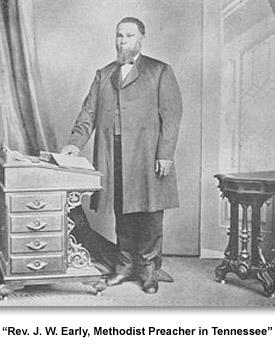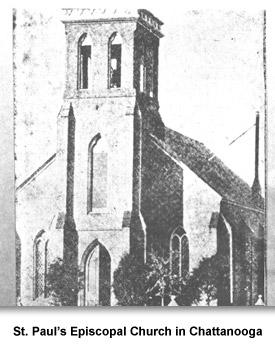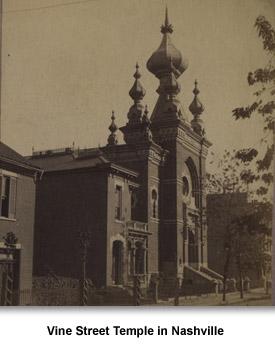Civil War and Reconstruction
Religion
The Civil War interrupted the operation of many churches. After the war ended many people returned to church. Often church buildings needed repairs.
Some congregations changed in important ways. Before the war, whites and blacks usually attended church together. During Reconstruction, many churches spilt into white and African American congregations.
Most black and whiteTennesseans went to church. Most were Protestants and belonged to Baptist, Methodist, Disciples of Christ, Presbyterian, and Episcopalian churches. Some Tennesseans went to Catholic churches. Others attended Jewish synagogues. After the war, Jewish communities increased in Memphis and Nashville and began congregations in Chattanooga and Knoxville.
Churches were an important part of many African American communities. Many black congregations bought land and built church buildings. For the first time, many churches had African American pastors.
Some church buildings also served as school houses. Churches provided places for neighbors to socialize. Churches were a source of strength for their members. Reconstruction was a time of great growth for African American churches.
Many white Tennesseans felt the need for a spiritual revival following the war. Churches sought out members who had stopped attending. They held special services to attract new members.
Picture Credits:
- Photograph entitled “Rev. J.W. Early, Methodist Preacher in Tennessee,” listed as the late Rev. J.W. Early. This photograph is included in D. D. Buck’s 504 page book, The Progression of the race in the United States and Canada: treating of the great advancement of the colored race, which was first published in 1907. The author credits Early as being the first Methodist preacher in the state. New York Public Library
- Photograph of St. Paul’s Episcopal Church in Chattanooga. The stamp on the photograph reads, “Photo by Jimmy Sampley.” Located on the corner of Chestnut and 8th Street, this building was completed in 1861 and used for a hospital for soldiers during the Civil War. Chattanooga Hamilton County Bicentennial Library.
- Stereograph, a type of photograph, of Vine Street Temple in Nashville. The Temple was completed in 1876 and served as Nashville’s first Jewish synagogue. Thuss, Koellein, Giers are listed as the photographers. Courtesy of the Tennessee State Library and Archives.
Civil War and Reconstruction >> Reconstruction >> How They Lived >> Religion



 Sponsored by: National Endowment for the Humanities
Sponsored by: National Endowment for the Humanities